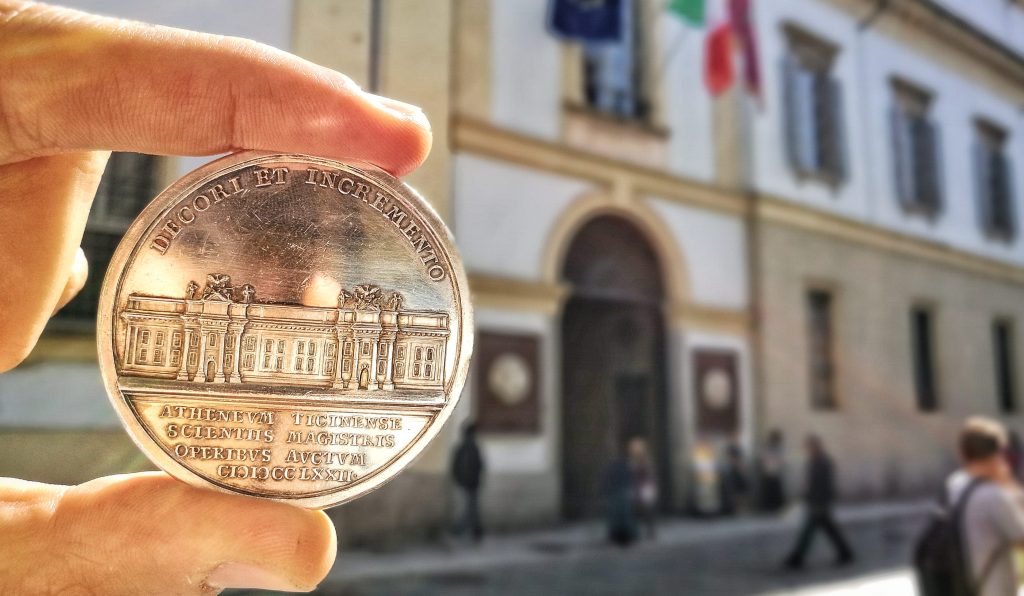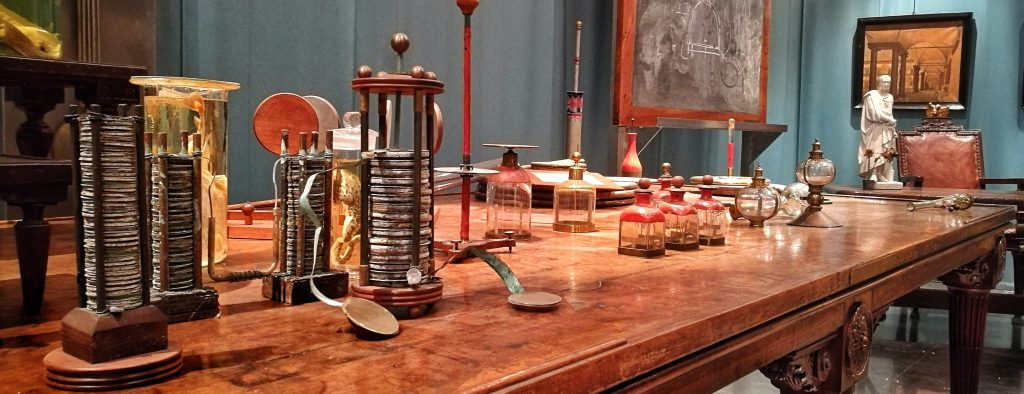ORIGINS
The core that originated the main Museum collections can be traced back to the education reforms brought forth by Empress Maria Theresa of Austria and her son, Joseph II.
During the second half of the XVIII century the winds of change of Enlightenment reached the University of Pavia, until then an almost forgotten appendix of the Empire. Empress Maria Teresa and Joseph II, both progressive monarchs, took to hearth the rebirth and blooming of the ancient University, promoting educational-scientific reforms and architectural renovations.
The General Magister of Studies approved an Education Plan (1771) and a Scientific Plan (1773) to better regulate the access of students to faculties, the call to teaching of Professors – now only picking between those of highest scientific achievement and reputation – and the reorganization of teachings – to accommodate a modern, experimental educational method.
To aide in the effort, new structures were developed and built: the main library, the Anatomical Theatre, the Physics Theatre, the Natural History Museum, the Botanical Gardens and the Experimental Physics and Anatomy Cabinets.

Pavia University, commemorative coin (XIII century)
NOWADAYS
The current set up of the Museum structure dates back to the 1930s. Between May and October 1929, the first national exhibition dedicated to Science History took place in Florence; a massive event, it was intended to make a show of “Italian power” and prove that the Italian genius had been great in all fields of study, and not just in poetry and art. The exhibition was divided by geographic areas, and the section dedicated to Pavia displayed
extremely rare items and first grade finds in many fields of science.
When the event came to an end and the pieces were bound back home to Pavia, it was decided to unite them under one Museum, dedicated to the history of the University. A location was agreed upon in the rooms of the ancient Scarpa Museum, recently emptied after the move of Anatomical Pathology to a new and more modern site.
Another exhibition, held in Pavia in 1932 at the Botta Palace to celebrate the centenary of the death of great anatomist Antonio Scarpa, had highlighted a few particularly valuable pieces; those items constituted a second core of the History Museum collection.
The new born museum then incorporated the entire collection that surgeon and professor Luigi Porta had gathered during his long activity in the rooms of the San Matteo Hospital (once a part of the University central building).
ACQUISITIONS
In the following years many more items, preparations, finds and documents were collected, adding to the main cores around which the museum had been formed.
Among these acquisitions, of undisputed importance is the bequeath of Golgi’s heirlooms, together with a vast archive and with the extensive instrument collection of the Physics Institute – which was moved from its original location near the Physics Theatre to the new buildings at the edge of the city.
With great patience, curators rebuilt the ancient collection that testified the teaching at the University of Classical Physics – statics, dynamics, hydrostatics, hydraulics and astronomical physics – and Experimental Physics – electricity, magnetism, heat, pneumatics, acoustics, meteorology and optics; these studies begun during the Hapsburg education reform, when the Physics Cabinet was at a time both research and education laboratory and home to a wondrous collection intended to impress visitors.
The Volta collection, comprising about 150 pieces, is completed by a few more recent items which allow for a more rounded understanding of the complex instrumentation needed in a XVIII – XIX century Physics Cabinet.

Volta’s laboratory, recreated at the Museum
MUSEUM SECTIONS
The Medicine section, divided in three rooms, preserves instruments and preparations that hail back to Scarpa’s (1752-1832) school of anatomical studies, to the progress in the surgical and clinical fields all through the XIX and XX centuries – thanks to historical figures such as Luigi Porta (1800-1875) and Carlo Forlanini (1847-1918) – and to the scientific school founded by Camillo Golgi (1843-1926), the first Italian to receive a Nobel prize for Medicine for developing a histological method that was a founding stone of modern neurosciences.
In the Physics section, Alessandro Volta’s (1745-1827) Room recreates and makes accessible to the public the ancient Cabinet of Physics. The Cabinet was originally located on the first floor, overlooking the Law portico and adjacent to the Physics Theatre. Under Volta’s direction, starting 1778, the Cabinet was equipped with the newest and most advanced instruments, utilized for both didactic and research purposes, and became a source of admiration for numerous Italian and foreign visitors.
A second room houses instruments collected by Volta’s successors during the XIX century.
The Museum also houses an archive which covers a period of time between the XV to the XX century. The documents, which are especially interesting where medicine history is concerned, constitute an important extension of the State Archive of Pavia (the ancient University Archive) and of the University Historical Archive.
